Frame vs. Guess Jeans
by YesPlz.AIAugust 2022

Product recommendations for eCommerce are powerful. But, just how powerful is an effective product recommendation? According to research by The Good, an accurate product recommendation can result in a 5.5x conversion increase. Shoppers report increased satisfaction, and a higher likelihood to return to your eCommerce.
If fashion search is the core of your eCommerce experience, product recommendations for eCommerce are what keeps shoppers interested, browsing, and shopping.
A poor product recommendation comes off as not only unprofessional, but will drive shoppers away to competitor websites.
But, what’s the difference between a “good” and “bad” product recommendation?
A “good” recommendation (see below for a detailed explanation) is multi-faceted, taking into account the many components of a shopper’s profile, stage of the user journey, and the product being browsed.
A “bad” recommendation isn’t thoughtful, doesn’t inspire shopping, and doesn’t consider the shopper’s style preferences.
Check out our LinkedIn page for more YesPlz tips.
In this article, we’ll review the product recommendation systems of two retailers: Frame and Guess Jeans, and determine who has the stronger recommendation system.
At YesPlz, we developed an eCommerce Product Recommendation scorecard to analyze the recommendations, based on criteria from The Good, and our own research.
1. Relevancy: Are the product recommendations relevant to the original search query?
A good product recommendation system should be able to identify relevant products–for example, if a user searches for a running shoe, she shouldn’t see knee-high boots.
Relevance can be broken down to include:
2. Not too similar
Product recommendations for eCommerce aren’t an exact science. But, showing shoppers the same exact shirt style and brand, but in a different color, is an example of a poor product recommendation.
But–that depends on where in the user journey the shopper lands. For example, a shopper that is viewing a product detail page has a high intention for that specific product–so showing similar style products makes sense.
3. Show complementary products (cross-sell) at checkout
If a shopper has already placed a product in her shopping cart, they’re likely interested in similar products (and in a purchasing mindset). The checkout page is a great opportunity to show similar products to capture cross-sell and up-sell opportunity.
4. Consider key product attributes like fit and silhouette
If a user is searching for a relaxed fit jean, eCommerce product recommendations should include the fit and style of jean. YesPlz research shows shoppers consider fit and silhouette to be important product attributes–a shopper that wants to flaunt or hide certain body parts, and will consider product recommendations based on those “preset” parameters.
5. Offer recommendations across categories
Depending on the sophistication of the product recommendation algorithm, we suggest offering recommendations across product categories to inspire more product discovery.
6. Curate products across homepage, product pages, and checkout
Product recommendations shouldn’t be limited to only one page–by curating relevant products across pages, there are more opportunities for discovery.
Rating: 👠👠👠👠 (4 out of 5)
We found the Frame eCommerce recommendation system to be well-curated, but at times, lacking sophistication.
Frame’s product recommendation system was strongest when recommending jeans: we were recommended similar fit (flare, in the example below). And, Frame was able to recommend a complete outfit based on the jeans–including a leather jacket and t-shirt.
The product recommendations were also easy to view from a UX standpoint, with stylized designs that mirrored a social media feed.
Frame also offered non-personalized product recommendations like best-sellers and top picks, for users browsing the homepage, which added to the recommendation experience.
However, we would have loved to see more recommendations (perhaps in carousel form). In addition, we suggest hiding out of stock products to make the user journey more seamless.
In addition, we’d love to see product recommendations at checkout.
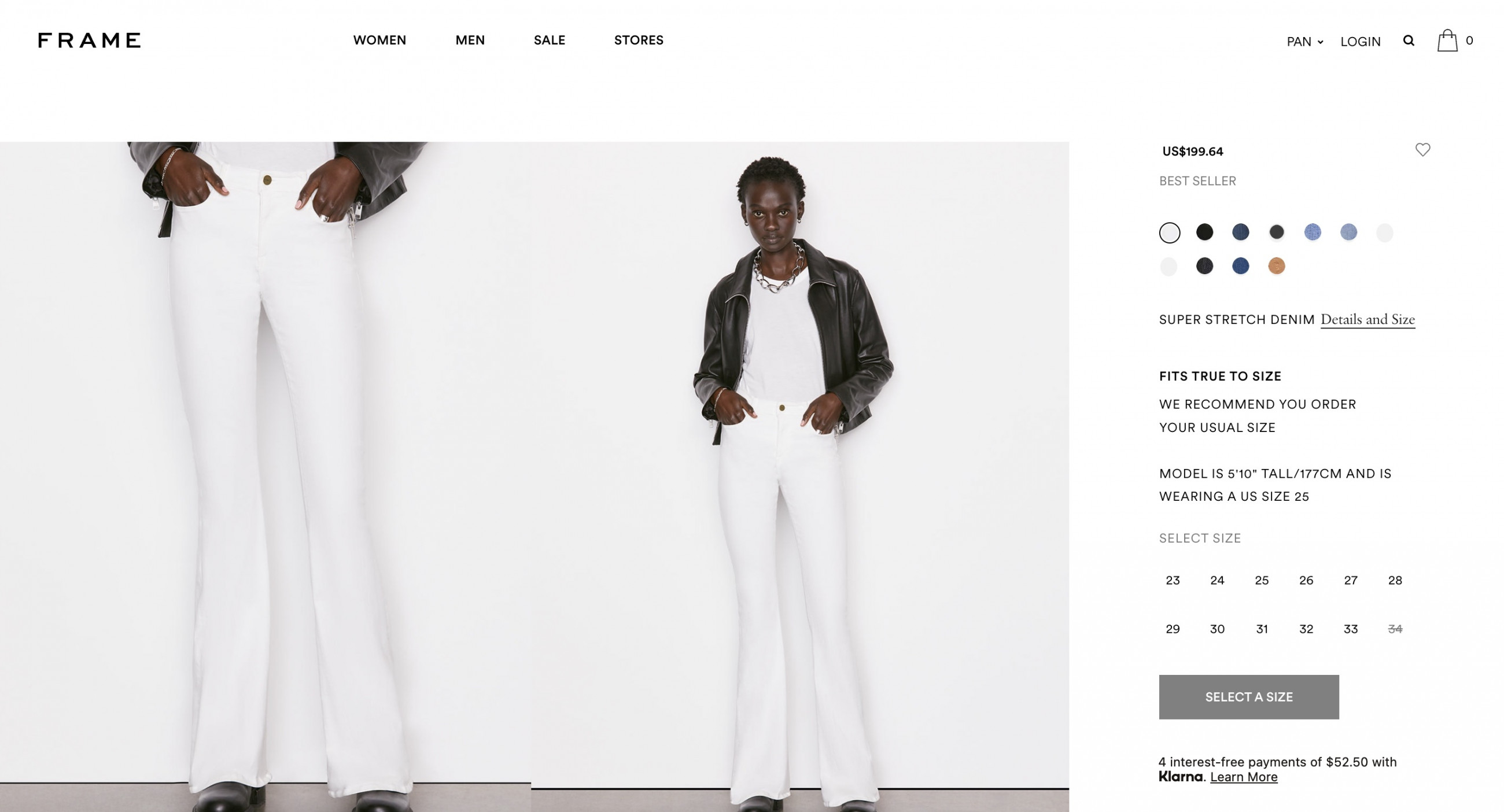
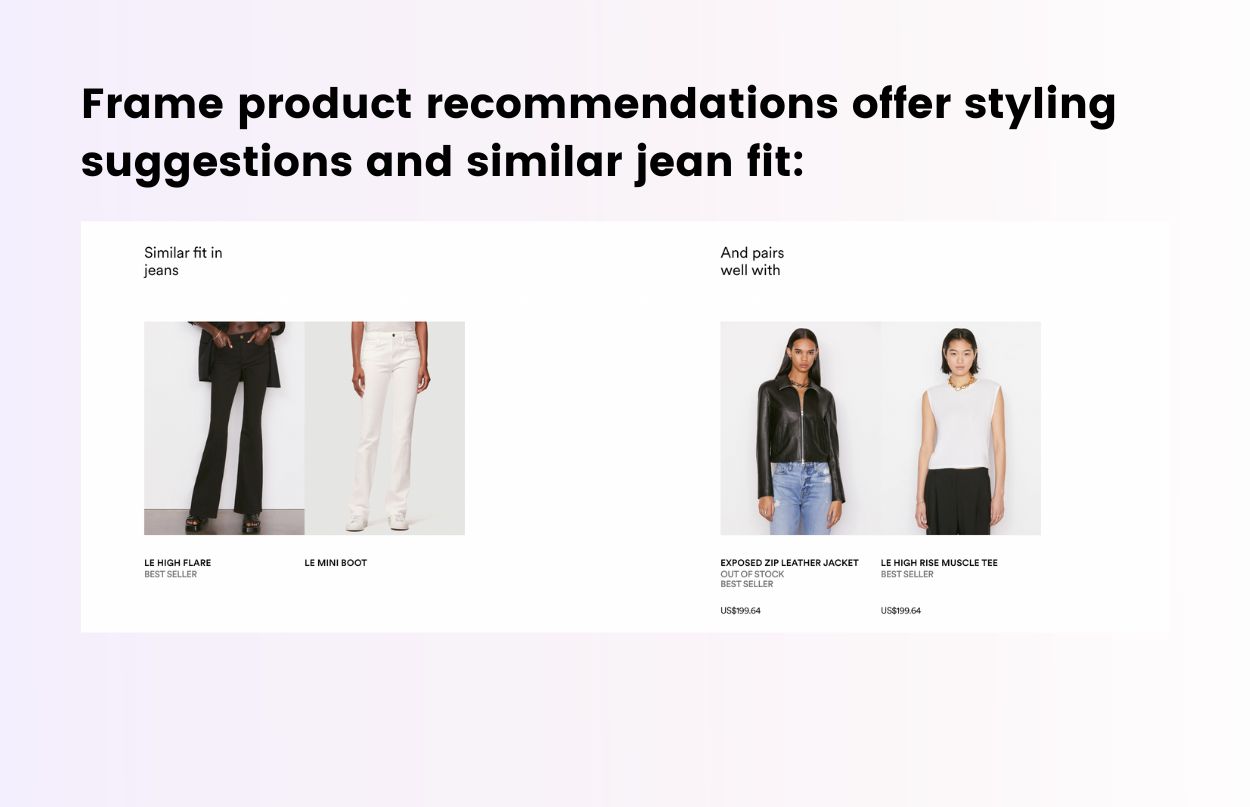
Rating: 👠👠👠 (4 out of 5)
At Guess, we encountered a collaborative eCommerce recommendation system: a recommendation system based around the choices that a user makes–and then connects those choices to a group of users with similar interests.
There are pros and cons to a collaborative product recommendation system–on a positive note, users can explore relevant recommendations (as long as they’re correctly sorted into a cohort).
However, collaborative filtering can fall short for a few reasons:
1- Feedback loops: It’s easy to get caught in a loop where users aren’t seeing new products, and product recommendations turn into an echo chamber.
2- Cold start issue: Because new users don’t have enough information to provide algorithms, it can take time for new users to start receiving relevant product recommendations–and while that may be OK in theory, when real-life users aren’t seeing relevant product recommendations, they’ll bounce.
3-Product tagging can also be a problem in collaborative filtering. A purse versus a handbag can get tagged differently–but should be treated the same.
For example, a shopper with a boho vibe will enjoy curated styles with collaborative filtering. But, what if she’s looking specifically for sleeveless maxi dresses?
Unfortunately, collaborative filtering falls short in recommending similar products. In the example below, if a shopper wants to see more “similar-style” maxi dresses, she’s left with limited options to explore.
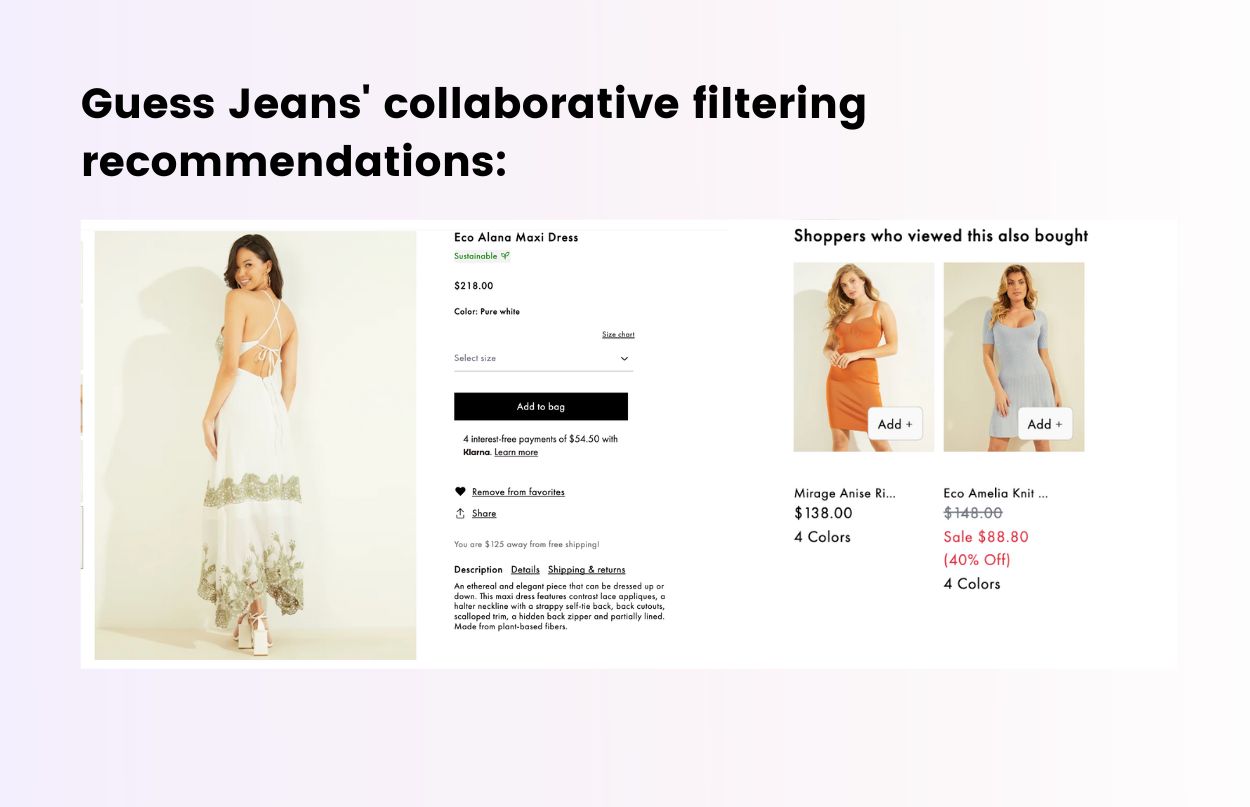
YesPlz product recommendations are fashion-forward, meaning that shoppers always see recommendations that make sense based on the products they’re browsing.
By using fashion-trained AI, we can quickly and accurately tag products to include silhouette, colors, prints, and vibe.
But–how did we train the fashion AI?
We interviewed online shoppers to find out which characteristics mattered the most to them–and found out that silhouette, pattern, colors, and design details are the attributes that they care about.
Then, we fed thousands of images of fashion products to our AI, and taught the AI fashion vocabulary to make it even smarter. Finally, we had fashion analysts teach our AI how to recognize product features from an image.
The result: fashion AI that can understand text as well as images to accurately understand different fashion styles and vibes
YesPlz product recommendations are based on two major themes:
1) Design styles of the products, such as silhouette, color, and print
2) Vibe, like occasion and fashion style
Because products aren’t only limited to features. The “touch of magic” that makes a good recommendation is vibe recognition–and vibe recommendations can create the feeling of a more curated shopping experience.
YesPlz product recommendations inspire eCommerce discovery by understanding the vibe behind products.
Let’s say a user is browsing two different cami tops–one with a “workout” vibe and another in a “party” vibe. The workout cami will generate similar recommendations–other workout camis- in a similar style (cropped, tight).
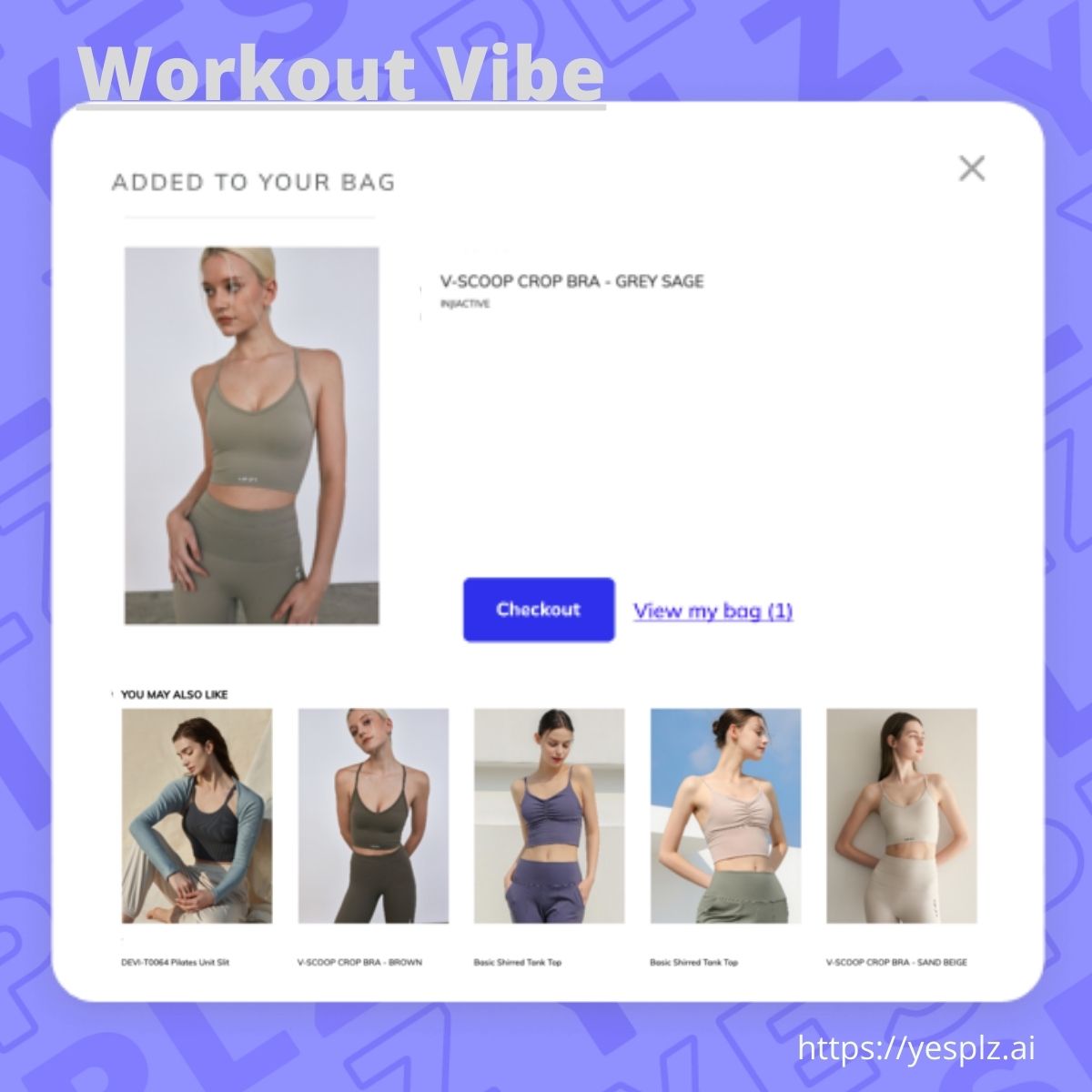
If the same user browses a cami to wear out to a party, she will see different recommendations that better reflect the mood and style of the product she’s browsing.
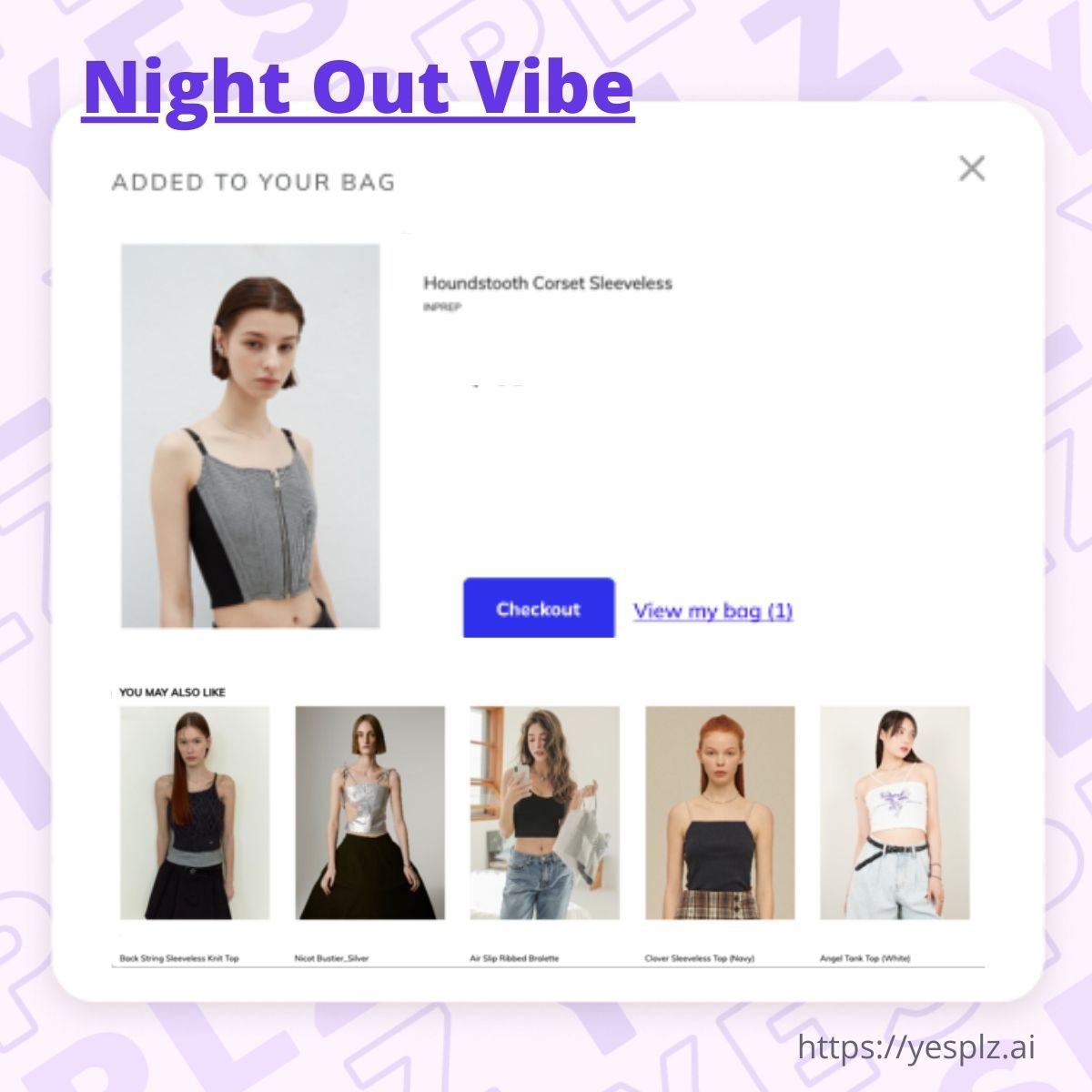
The key to good product recommendations is capturing the mood/occasion, and then further curating by style elements like silhouette and fit.
Product recommendations are the basis for more satisfied customers, and more conversions. When shoppers can find what they’re looking for, faster, eCommerce brands see more conversions. Strong product recommendations can also inspire eCommerce discovery, leading to more purchases and more time spent on page browsing.
But, product recommendations are difficult to get right because they need to constantly be recalibrated.
Styles and trends change–but with YesPlz AI-trained recommendations, eCommerce brands don’t need to worry about manually tagging new products, or keeping up with the latest names of trends.
There's good news for fashion eCommerce brands: you don’t need to write your own product recommendations. Use YesPlz’s fashion-trained algorithm to get started today.

Written by YesPlz.AI
We build the next gen visual search & recommendation for online fashion retailers
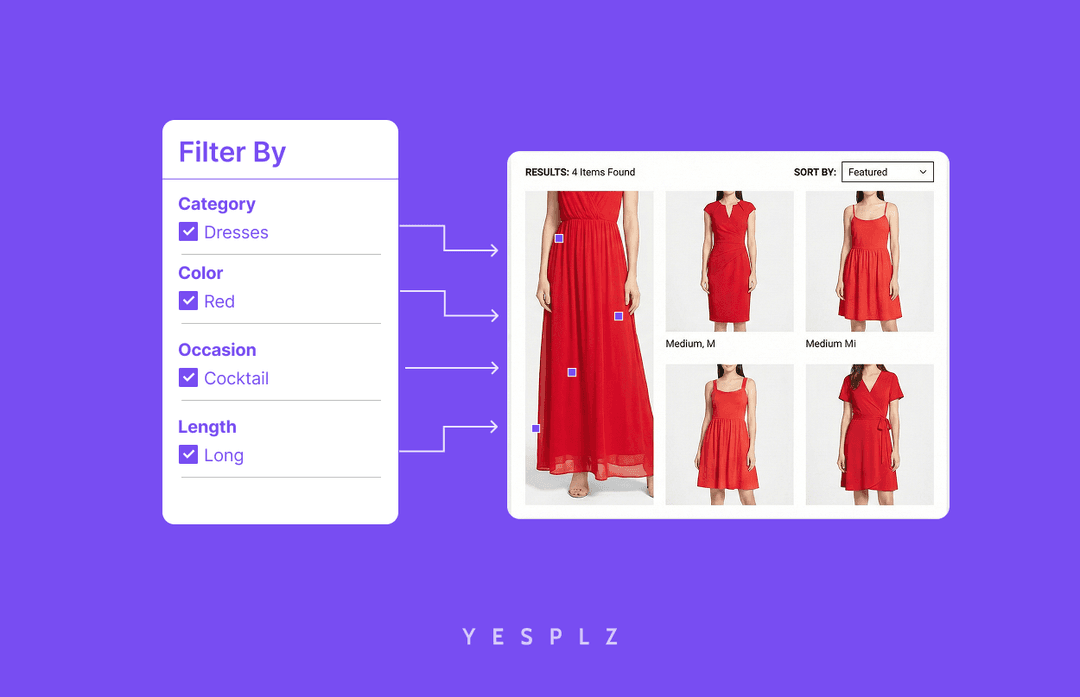
Stop losing sales to poor product filtering. Discover how AI simplifies creating Shopify filters, saving you 25-50 hours per 100 products.
by YesPlz.AI
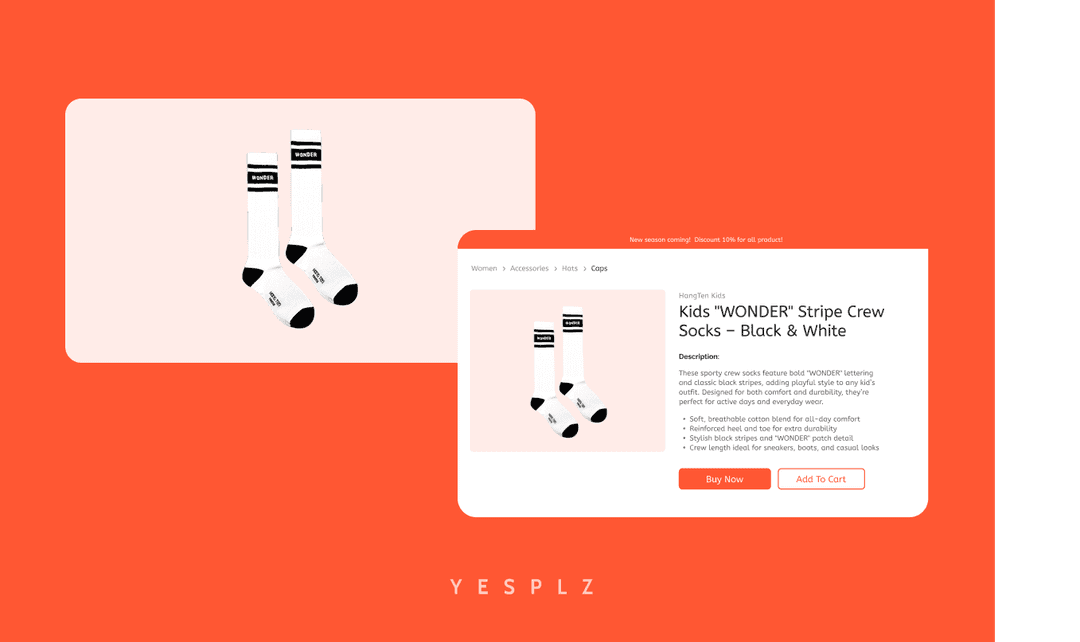
Automate Shopify product pages and cut 50–100 hours of manual work. AI generates product titles, descriptions, and metadata instantly from product images.
by YesPlz.AI